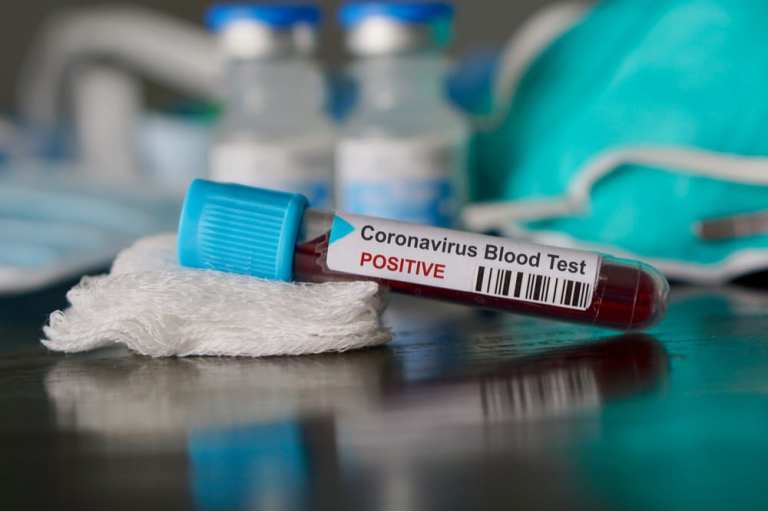Despite being less than halfway through, it seems clear at this point that the second week of March will make the list for wildest weeks in the market this year, or even possibly this decade.
Things got started off with fireworks, but not the good kind, on Monday as a bloodbath on Wall Street’s trading floors ended with record drops out of various indexes, tripped circuit breakers, and saw the DOW, Nasdaq and S&P 500 all falling by 7 percent or more by the end of trading day. The good news is that by the next morning, at least some of the doom and gloom had cleared — and by the closing bell, the DOW had picked up over 1,000 points and cut Monday’s losses in half.
So, what happens now?
That, as it turns out, is the several hundred-billion-dollar question. It’s not quite accurate to say that the uncertainty wave that the coronavirus has brought crashing through the markets — not to mention travel, events and the global supply chain — has been universally destructive.
At this point, after weeks of roller coaster rides on the stock market tipped off by the global emergence of the coronavirus, it is probably safe to assume no one is really quite sure what will happen next one way or the other. One investor’s bloodbath is another’s buying bonanza after all. As consumers have become increasingly aware of COVID-19, the disease caused by the coronavirus, and begun stocking up on emergency supplies like canned goods, potable water (which the Centers for Disease Control and Prevention keeps reminding people they don’t need), hand sanitizer and home first aid materials — players like Costco, Campbell’s Soup and others positioned to sell to consumer concerns at present have seen more activity, not less.
But even a business that has seen a bump, is also experiencing its downsides, like when it is paired with a global supply chain downturn — putative winners like Costco struggling to keep up when demand is high, but its supply chain is uniquely vulnerable when it comes to meeting it. According to Chief Financial Officer Richard Galanti, the club retailer’s procurement team is now “working, in some cases, around the clock to procure supplies for both existing suppliers and from other sources where possible.”
Advertisement: Scroll to Continue
The uncertainty in the market has left merchants worldwide rethinking their strategies for reaching consumers — and creating connections as the ripples are running through the global economic ecosystem. This, according to some reports, has caused some system-wide refocusing, as marketing and advertising budgets are shrinking drastically. Those funds are being repurposed toward building community, toward crisis mitigation and, on the whole, toward keeping the consumer relationship alive and vital — even when consumers aren’t going to the stores.
According to Elijah Whaley, chief marketing officer of Chinese influencer marketing agency Parklu, the crisis as it has played out in Asia so far has seen brands from global luxury providers to day-in, day-out commodity providers moving their focus away from brand awareness and ad campaigns in favor of informational and community-building activities within their consumer base. It’s not so much about trying to stimulate spend in a period of uncertainty and limited movement, he noted, which could just be a non-starter. Instead, it is about establishing presence.
“When they start spending again, they are going to spend with you,” Whaley noted of the ultimate payoff.
But while focusing on building a community in lieu of building a marketing campaign has something of a ring to it in the abstract — what that actually cashes out in terms of practical applications is a ranging field full of expected and unexpected things.
On the more traditional side of things, the rain of discounts coming down via digital channels has turned from a drizzle to a downpour in the last few weeks, particularly in verticals hit hardest, like travel. With booking across hotels, online travel agencies, airlines and cruise ships down by as little as 1 percent and by as much as 20 percent, the discounts on flights, trip packages and sailings are coming fast and furious. And if your assumption is that all the discounting in the world with an incurable, intractable and highly contagious virus in circulation is not going to make a difference, well, there might be something to that. But, at least early anecdotal evidence from social media says otherwise.
“A lot of cheap flights right now, and part of me thinks, if I’m going to get the coronavirus, I might as well get it in a deeply discounted 5-star hotel in Venice,” wrote one Twitter user, apparently unconcerned with the closed-for-business sign Italy has put out in the last 24 hours.
And while the deals on travel are the most eye catching, they are far from alone. Anecdotal evidence rolling into PYMNTS tells the tale of online retailers, particularly those pushing big ticket luxury items, also pushing big rewards for orders, like $500 rebates on certain (admittedly quite large) purchases.
And those anecdotes match early data coming out of high-end global retail brands like Burberry and LVMH, according to reporting in business Vogue, reprioritizing investment that had gone into physical channels but is now going into increased digital promotion and acquisition. Discounting is part of that strategy — as is wider digital outreach on the whole — including more social media content creation, but not all of which is tending toward direct product promotion.
That’s because, Vogue Business noted, part of those enhanced efforts in community building are actually flowing into more out-of-the box and less-expected channels. That’s taken a few forms — information pushes via social and web channels, greater interaction with influencers, and key opinion consumers (KOCs) to push information campaigns and directly charitable action. LVMH, Kering and Estée Lauder are an incredibly short sample of the list of global luxury brands that jumped quickly to focus on information dissemination and in contributing medical supplies and funding prevention work.
And as COVID-19 has spread, brand efforts at digital community building and leveraging unusual or unexpected digital channels as part of the containment effort have also multiplied.
Voice assistants — long used to answer consumer questions about the weather, the time and various bits of trivia — have seen a drastic uptick in questions about the coronavirus, and they have been aggregating consumers toward informational sources that various testing has demonstrated are reliable and well-curated. Siri and Google Assistant both lead by pointing consumers to the CDC website. Both offer up a selection of some news stories, according to reports.
Alexa, by most tests offers up the most information. Instead of the CDC, it leads with an article from the World Health Organization to read out loud about the disease, how it spreads, and steps to take to protect yourself, meaning washing hands works, masks don’t. It also can ask direct questions about COVID-19, such as what its spread and death rate are, which seems to be in line with guidance from public agencies, although occasionally a bit out of date.
Alexa had none of these abilities six weeks ago and has rapidly evolved a large COVID-19 data set. It has not, however, fully mastered understanding human speech when it comes to the name coronavirus, which it often mistakes for “carotid virus,” “cordova virus,” and “carnivore virus.”
Voice assistants have also become an increasingly large part of the Red Cross’s efforts at preventative preparation, with its Alexa skill now actively pushing consumers toward blood donations, by making it easy for those who want to donate to find a place to do so, and even directly set up a donation appointment. That skill, according to Chris Hrouda, president of Red Cross Blood Services, is important as blood reserves are running low coming out of cold and flu season, which is an unusually big problem with COVID-19 appearing in an increasing number of American states.
How big of a problem? That, of course, is yet another one of the uncertainty branches spreading throughout the global economy of late, and one with too many unknown variables to predict. But as the pressures mount, the market is evolving and finding new ways to reach its customers —more ways to offer remote service, more spots to be part of the solution, and more touch points for the consumers to interact with.
Those interactions may not be transactions — yet — but they might just be building the good will (and the shifted consumer habits) to flip them into transactions when the COVID-19 fire currently raging burns back down to the embers.




